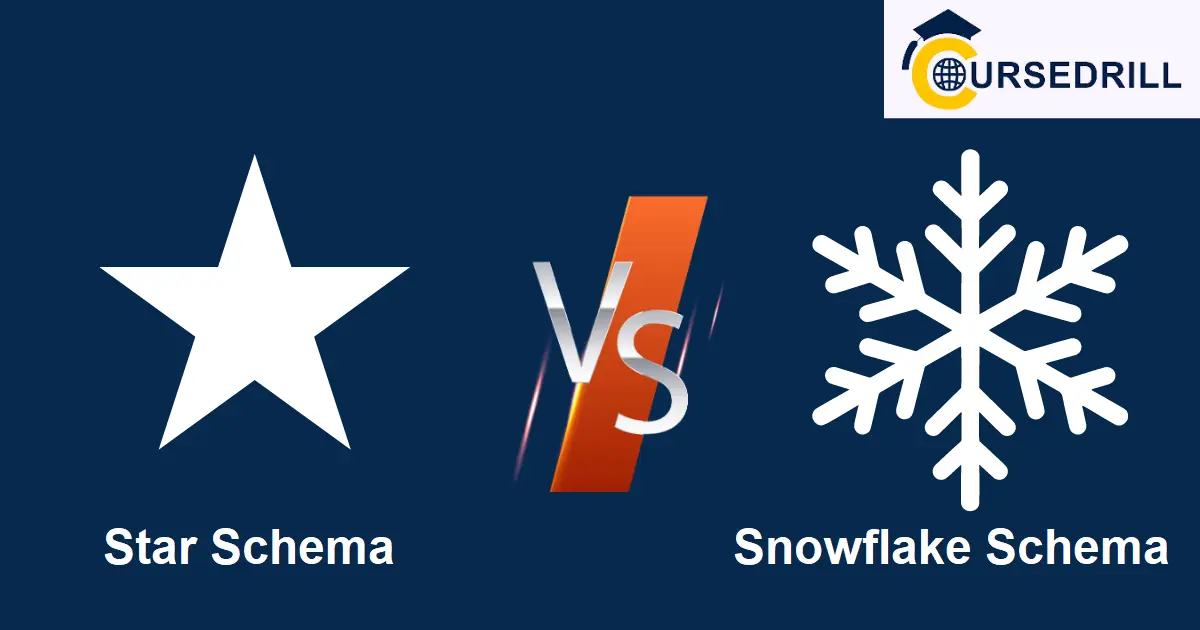- Posted on
- admin
- No Comments
Star Schema Vs Snowflake Schema: Understanding the Major Differences
In general, It becomes a challenging task to work with a database if we have no clear understanding of it. Schemas are the ones that eliminate this challenge and help the users with a clear understanding of the database architecture and logical relationships between various elements within the database. Star Schema Vs Snowflake Schema has been designed to discuss two important schemas that are Star schema and Snowflake Schema.
Following are the concepts covered in Star Schema Vs Snowflake Schema Tutorial:
Table of Contents
What is Schema?
Let’s have a clear refresh of what is Schema? Schema is defined as a structural view of the database. In simple words, it is the design of a database and provides an entire knowledge of a database. A schema diagram states the process to organize data in a database. It defines multiple entities and relations between them.
What is Star Schema?
Star schema is the simplest form of Data Mart schema and widely used approach to develop dimensional data marts and data warehouses. It consists of one or more fact tables and dimension tables.
The Star schema divides the business process data into facts tables and dimension tables. The Facts table consists of measurable, quantitative data about a business that includes sales price, sales quantity, speed, time and weight measurements. Whereas Dimensions table consists of descriptive attributes related to fact data, which include product models, product sizes, product colours, salesperson names, and geographic locations.
Example diagram of Star schema
Interested to begin your career in a top Cloud Data warehouse platform?
Know more about the industry-oriented Snowflake Training course. Talk to our subject matter experts!
Snowflake Schema
The Snowflake Schema is defined as a logical arrangement of tables in a multidimensional database. It is an expansion of the Star schema. The Snowflake schema acts as a centralized fact table that is linked to multiple dimension tables using many to one relationship.
In general, the tables in the Snowflake schema are normalized to the third normal form. Star and snowflake schemas are commonly used in dimensional data marts and data warehouses where the speed of data retrieval is given more importance than the efficiency of data manipulations.
Watch Snowflake Training Demo
Star Schema Vs Snowflake Schema: Key Differences
Following are some of the notable difference between Star Schema and Snowflake Schema:
S.No | Star Schema | Snowflake Schema |
1 | Star schema consists of fact tables and dimension tables. | Snowflake contains fact tables, dimension tables and also sub-dimension tables. |
2 | Here hierarchies are stored in the dimension table | Hierarchies are stored in various tables |
3 | It follows a top-down model | It follows a bottom-up model |
4 | Simple Database design | Complex database design |
5 | Cube processing is faster | Cube processing is a bit slower due to complex join. |
6 | High-level data redundancy | Low-level data redundancy |
7 | Contains aggregated data in a single-dimensional table | Data divided into various dimension tables |
8 | In a Star schema, a single join is capable enough to create a relationship between a fact table and a dimension table. | Snowflake schema needs multiple joins to fetch data. |
9 | Provides high performance for queries using star join query optimization. And it may be integrated with multiple tables. | It is presented by a centralized fact table which may not be connected with multiple tables. |
10 | Denormalized data structure | Normalized data structure |
11 | It consists of fewer foreign keys | It consists of more foreign keys |
12 | It requires more space | It useless space |
13 | Easy to understand | A bit complex to understand |
Advantages and disadvantages of Star Schema
Advantages of Star Schema:
- It is simple and easy to learn and build.
- Easy to perform queries without the need of creating any complex joins.
- Data accessibility is faster using Star schema because its engine doesn’t have to join multiple tables to generate output.
- Easy to generate business analytical reports
- Gives high performance when working with analytics tools like OLAP
Disadvantages of Star Schema:
- Denormalization causes integrity issues which means the data may turn inconsistent at specific times.
- It becomes a challenging task to manage when the database size is larger.
- Demands more disk space compared to snowflake schema to store data.
- Very limited support for the development of Many-to-many relationships.
Advantages and disadvantages of Snowflake Schema
Snowflake Schema Advantages:
- Normalization of data and minimal data redundancy helps it in using less disk space.
- Maintenance is efficient and simple because less risk of data integrity challenges and a low level of data redundancy.
- Eliminates data integrity issues.
- It offers more space for powerful analytics.
- Easier to work with complex queries.
- Supports many-to-many relationships.
Snowflake Schema Disadvantages:
- The snowflake schema is very hard to design.
- It becomes a challenging task to maintain a huge number of tables in the data warehouse.
- Queries can be complex and slower due to many joins
- Snowflake demands specific skills to deal with the Snowflake schema.
Closing Thoughts
In this blog, we have compared two different schemas and their advantages and disadvantages. Hope this blog has helped you in finding useful information about Snowflake Schema vs star schema. You can also check out various Snowflake interview questions and answers here. Happy reading!
Author Bio

Yamuna Karumuri is a content writer at CourseDrill. Her passion lies in writing articles on the IT platforms including Machine learning, Workday, Sailpoint, Data Science, Artificial Intelligence, Selenium, MSBI, and so on. You can connect with her via LinkedIn.
Popular Courses



